Genre: RPG Developer: Sega Europe Publisher: SEGA Europe Players: 1 Released: 1990
Ask any veteran of the early home computer age what his favorite RPG series was before, say, 1994. Usually, you’ll notice his eyes glaze over, and his mind going far, far away to some happy place. Then, after a long, awkward pause of silence, his mouth slightly opens, and you’ll hear one solitary word coming from his lips in a silent whisper: Ultima.
Born on the Apple II home computer, Richard Garriott’s Ultima series was one of the earliest CRPGs created. Its individual entries soon became somewhat of a benchmark for western computer role-playing games for years to come. At least up until its eighth installment, each new installment introduced some new element that made the series stand out from most of its contemporaries. The fourth entry, Ultima IV: Quest of the Avatar, created in 1985, is generally regarded as a major game changer and one of the best games of its era, not only within the context of the series but also of the computer gaming landscape in general. So of course, it was ported to pretty much every single home computer in existence. But Origin wasn’t blind to the reemerging console scene and also permitted several of its Ultima games on the NES (Ultima III, IV and V) as well as the SNES (VI and VII). The latter even got a few original Ultima games of its own.
Overall, the entire Ultima series consists of nine main entries (technically 9.5, seeing that Ultima VII was released in two parts, possibly inspiring the Final Fantas tick of sequelizing individual sequels), four semi-canonical spin-off computer games (The Worlds of Ultima and Ultima Underworld games), two console-only sequels licensed by Nintendo (Runes of Virtue I & II) and probably the mother of all modern MMORPGs, Ultima Online (let’s just ignore all those post- 2000 free-to-play-bastardizations by EA and pretend those never happened). Yet none of these games was ever brought over to a SEGA console… except one. As the story goes, Nintendo was very unhappy to learn that Origin planned to allow a port of one of its games to a Sega console and, depending on the source, either filed suit or threatened to sue Origin, delaying the release even further. Whatever the reason for its late appearance in the Master System library, in 1990, the year where PC gamers first got to play the sixth entry in the ever increasingly popular series and five years after its initial inception on 8-bit computers, the Master System port of Ultima IV found its way into European homes (and later on to Brazil as well). And what a damn fine port it is! I may be getting a bit ahead of myself here but let me tell you that the Master System rendition of Ultima IV is probably the best version of the best entry in one of the best classic western RPG series ever!
But what made Ultima IV so special? Well, as the story goes, Richard Garriott aka Lord British, the creator of the series, faced a lot of backlash by angry parents and religious groups after the release of Ultima III: Exodus. You see, the box cover to that game had sported imagery that some considered devilish, even demonic imagery, which thus would prove that role-playing games were evil and computer games would corrupt children… you know, the usual. Never mind that the goal of the game was to ultimately destroy said evil and free the world of that influence. So Garriott had a thought: What if, instead of going out and destroy a solitary, vaguely defined “evil” villain, the goal of the game was to become an overall virtuous and morally exemplary person, a shining beacon to others, an avatar of true virtue itself so to speak? What if you could create a game around these issues in such a way that it both wasn’t preachy and still entertaining? Thus, Ultima IV: Quest of the Avatar was born.
The first major thing standing out in Ultima is the character generation right at the beginning. Instead of rolling attributes, distributing points, selecting a class or even starting with a predetermined individual, a gypsy woman asks you a series of questions, each regarding a certain moral dilemma. For example, you have learned the lord you’re serving has committed a crime, but you have sworn to stay loyal to him. Now authorities are questioning you. Do you a) honestly tell them what you know, or b) uphold your honor and protect your lord? There aren’t any truly right or wrong answers to these questions; they rather serve to determine towards which of the eight possible virtues are you most inclined. Would you rather bring a murderer to justice or show compassion towards the girl he’s protecting? Do you show valor by entering a contest, or are you preferring humility and decline? Would you follow a path of spirituality, or sacrifice everything you’ve strived for to help an uncle in need? Each of the answers you give will influence what character class you will end up with, ranging from the honorable paladin to the humble shepherd. Once your class has been determined, you enter the world of Britannia, near the town that is most closely connected to your strongest virtue. This means that, depending on your character class, each game starts at a different location. But don’t worry if you didn’t receive a particular role. For each possible character class, there is one character in the game that can be recruited into your party at some point, so it all balances out.
So, if there’s no central villain to the story, what’s the game all about? Well, once you enter the throne room of Castle Britannia – or once you die, in which case you get immediately resurrected there – the resident king, Lord British (yes, creator Richard Garriott did insert his own alter ego into the game, acting as the supreme ruler of the entire realm), hands you your one and only quest for the game: become the Avatar, a moral paragon of the eight virtues and role model for the entire realm. Only the Avatar can enter the Stygian Abyss and receive the Codex of Ultimate Wisdom. This task is as complex as it is vague. The entire quest revolves around doing the deeds necessary to strengthen your individual virtue, but how you go about accomplishing that is left to you to find out. The seer Hawkwind can tell you whether you’ve come closer to your goal or strayed from your path and tells you to seek the shrines of virtue – without telling you where they are. Some tasks are relatively easy. Giving alms to beggars raises your compassion, while attacking peaceful villagers decreases said stat. Others are trickier. For instance, if people ask you whether you have been the one killing all those evil monsters, can saying rightfully ‘yes’ be seen as pride which lowers your humility, or does saying ‘no’ count as dishonesty? Cowardly fleeing from battle decreases your valor, while killing fleeing (humanoid) enemies is dishonorable, and attacking non-evil creatures can really mess things up. And you know of the old RPG cliché where the hero just can waltz into anyone’s home and ransack their stuff? Well, you could do that here as well, but it is theft, and committing crimes lowers both your justice and your honor rating. So, raising these invisible virtue stats is more difficulty than you might think. Though there is a rather simple exploit that allows you to max out your sacrifice score without ever leaving Castle Britannia…
And all the while, you have to seek clues about the shrines – how to find them and how to enter them. You will have to seek out dungeons and find mystic runes and artifacts, all the while talking to the people of several cities, who may give you hints or tell you more about the land. For example, you learn about the fall and destruction of the proud city-state Magincia, which now only has a single humble shepherd as the sole, still living inhabitant. The game is very nonlinear, as it’s all about exploration, both of the land as well as the underlying mechanics, and it manages to create a complex experience out of the one single task you’re given; however, it doesn’t have a log of its own, so you had better keep a pen and notebook ready so you can keep track of the whereabouts of dungeon Deceit and what you may find there. You can have up to three battery states to save your progress though, which is very welcome.
The entire game is one huge, intricate puzzle to be solved. The mechanics are also worth mentioning. You can talk to pretty much any of the roughly 200 NPCs in the game. Conversations are held via keywords. Aside from asking about an individual’s name or job, some keywords are driven by context, like asking for the menu items in an inn. Others only become available after you’ve found certain clues or learned an important piece of information. While the answers are usually short, this is way more involved than the usual, one-note answers you normally get in console RPGs of that era. Britannia certainly feels pretty much alive and active that way. If you want to cast magic, you first have to prepare each of the 25 in-game spells using the right reagents, which can be bought at herbalists of found in the game or after battles. Most of the spells and what reagents they need are described in a short booklet called “The Book of Mystic Wisdom,” which is delivers an account of the magics in Britannia written from an in-game perspective, as well as shortly summarized on the map that came packaged with the game. Full copies of the original cart release also include another booklet called “The History of Britannia,” which describes the world and gives out a few hints about how to approach certain tasks. While not strictly necessary to complete the game, these physical add-ins provide some nice fluff and are quite helpful. For example, “The History of Britannia” details which creatures are considered “evil” and can be attacked without penalty.
Once you enter combat, you fight on a strategic map where you move your party members around in order to attack, defend, or cast combat magic. Interestingly enough, while the computer versions of Ultima IV only allowed attacking in straight lines, in this version you can also fight diagonally, giving battles more depth and making ranged combat more comfortable. You can use the usual assortment of weaponry and armor (the paper map included in the game details, which character class can use which), as well as healing items and such. Should you die, you will be resurrected at Lord British’s throne room, usually with a small penalty in gold and experience and with your weapons and armor wearing out a bit more (dying in battle does increase your hidden Sacrifice stat though). Aside from that particular teleportation, you usually traverse the land by foot (relatively slow), on horseback (faster) or using a so-called moongate. During particular phases of Britannia’s two moons, depicted on the top of the screen, these portals open on the world map and allow fast teleportation across the land. Depending on the lunar cycle, you end up at different places as well. This also comes into play for certain puzzles in the game. Teleportation by magic is also possible, either by using the “Blink” spell on the world map or preparing the up/down teleport reagents for changing levels in a dungeon.
Speaking of dungeons, one major change from the home computer versions is the way the dungeons are displayed. While originally dungeons used a 3D viewpoint, the Master System version of Ultima IV instead uses the same top-down perspective used in towns. Some magazines speculated this decision might had been made due to technical limitations, but this line of argument seems odd considering that Phantasy Star had also utilized 3D dungeons, seemingly without problems. More likely, the expulsion of the 3D view was due to the fact that during the time this port was released, the PC version of Ultima VI also hit the market, and it ditched the 3D dungeons as well. Whatever the reason, personally I prefer the newer, top-down point of view, since the original 3D corridors where rather difficult to navigate. And since I already mentioned Phantasy Star, I might also come to the singular gripe I have with Ultima IV. The Master System port is probably the best-looking rendition of the game, but presentation-wise it can’t hold a candle to Sega’s classic. The tile-based graphics sure look good on the world map and make good use of color, but in towns, or particularly within buildings, everything looks rather sparse with lots of black screen and only small, barely animated sprites representing the characters. It’s better than the original look, which was less colorful and mostly used stick figure-like stand-ins for NPCs and party members, but it still is a bit lacking compared to other, better-looking entries in the genre. The sound is also nothing to write home about, since there is only little music and sound in the game, none of which comes off as particularly memorable. The amount of detail that went into the world itself more than makes up for that, however: Phantasy Star might look prettier and have the better music, but Ultima IV counters that with a very involved, non-linear approach to the story, a much more diverse feeling regarding its respective locations and a livelier world in general, giving even townspeople and innkeepers some semblance of an individual personality. Given the complex nature of the quest, the game also is a good deal harder than your average console RPG.
Back in its day, Ultima IV: Quest of the Avatar was considered a game changer for the entire RPG genre, and it’s easy to see why. If you can look past the comparatively meager presentation, Ultima IV provides you with an involving adventure and a rather unique role-playing experience that still holds up to this day. The amount of detail that went into creating the world is pretty amazing, especially for the 8-bit era. And while a role-playing game without a central villain may seem odd at first, the level of complexity involved in solving the quest with all its puzzles and intricacies may astound you. If you prefer a linear storyline and down-to-earth monster slaying, you might find this a bit hard to access. For every other fan RPG genre though, this is an absolute must-play. And if you have heard of the Ultima games but never tried one before, the Master System version of Ultima IV is probably the definite point of entry into the series, both from a story and a gameplay perspective.
SCORE: 9 out of 10

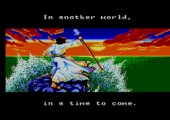
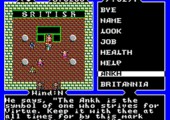
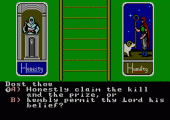
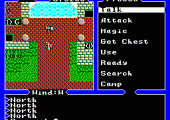
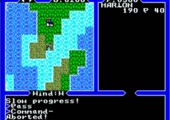
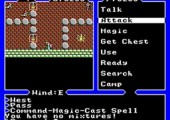
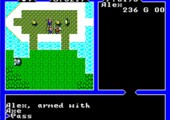
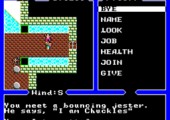

Recent Comments